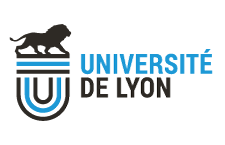Unités de recherche
Partenaire 09: Lésions des Acides Nucléiques
Biologie, médecine, santé
- Adresse :
- Laboratoire Lésions des Acides Nucléiques
INAC/SCIB (UMR-E-3 CEA-UJF)
CEA Grenoble
17 rue des Martyrs
38054 Grenoble cedex 9 - Tutelle :
- CEA
Organisation
Représentant: Jean-Luc RAVANAT
The work of the laboratory "Lésions des Acides Nucléiques" (LAN) (Project Leader: Jean-Luc Ravanat) from CEA-Grenoble (INAC/SCIB) is located at the interface between chemistry and biology. Its research mostly focuses on modifications of the chemical structure of DNA, in particular of nucleobases, induced by a series of genotoxic agents. Investigation of effects of ionizing radiation on DNA and cells is a major activity in the group since its creation in the 1980’s. Extensive research is done on the identification of new DNA damage and their formation in cells. In the recent years, emphasis has been placed on the effect of radiation quality, a topic that remains to be further explored. The group also has developed tools for studying DNA repair that can be applied to radiobiological issues.
A first contribution of the LAN to this project will be a better understanding of the effect of radiation quality of the nature DNA damage. We aim at understanding how this specific energy deposition, for instance in the case of heavy ions or electrons arise from X-ray photoactivation of high-Z elements, impacts the yield and the structure of the DNA lesions. All these experiments require DNA damage quantification that is performed by several techniques: HPLC / mass spectrometry for modified bases, comet assay for strand breaks and g-H2AX test for double strand breaks. Using synthetic pieces of DNA bearing specific lesions makes then possible to study their repair and determine their mutagenic properties.
In addition to increasing our knowledge of the deleterious effects of ionizing radiations, the experiments described above will help to validate predictions made by the dosimetry physicists involved in the project (M. Beuve team). This is an important issue for radiotherapy strategies. The theoretical chemists of the LAN team will also contribute to the modelization part of the work. They have developed recently a series of reactivity descriptors that have been applied to DNA modifications. They also have a long experience in the description of radical reactions in DNA bases. These approaches, combined with techniques developed by other members of the Labex (E. Dumont) will also provide a better description of radiation-induce DNA. Combination of such data with calculated yield of water radiolysis species (Beuve team) will lead to realistic models of DNA damaging, a major step in radiation-induced biological effects.
The LAN group also has a long experience in studying the cellular response to various stresses, and in particular to radiative ones. This is made possible by the expertise of the biologists in human cell culture. Most research is done on cell lines but some works, for instance on skin, are performed with primary cultures. Basic parameters such as cell survival and anti-oxidant capacities are routinely monitored. The team has also developed a series of approach to determine the DNA repair capacities in cells. This defense mechanistic is a key issue in radiobiology because most of the deleterious effects are often believed to involved damage to the genome. The most sophisticated approach relies on the use of a home-designed microarray bearing modified DNA and that allows the simultaneous measurement of several repair activities. The technique is mainly applied to the repair modified bases but will be extended to double-strand breaks which are very relevant lesions in radiobiology. Other DNA repair tests are based on the comet assay and the determination of repair kinetics in cellulo. These techniques will be applied to the determination of the impact of radiation of different quality on the efficiency of DNA repair in a series of relevant cell types. The results will be confirmed by the determination of the expression of key genes using RT-qPCR and the quantification of related protein by western blot.



 Accueil
Accueil PRES LYON
PRES LYON Nous contacter
Nous contacter Archives
Archives WebAdmin
WebAdmin